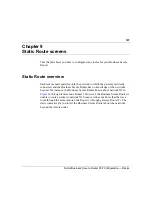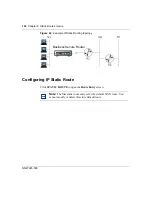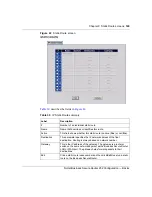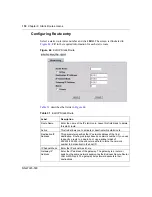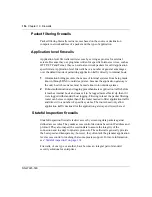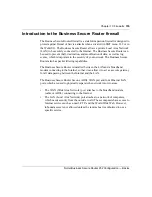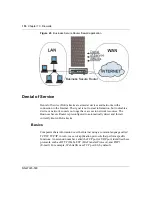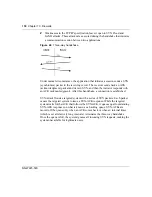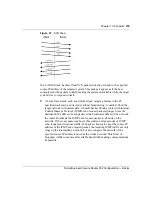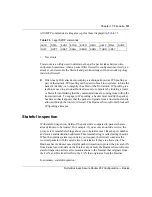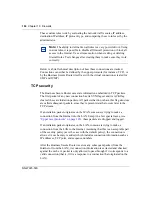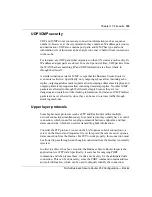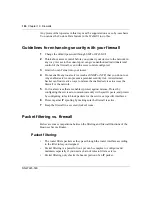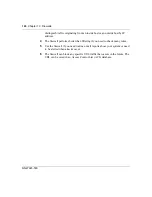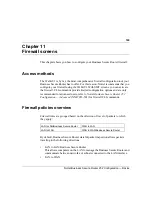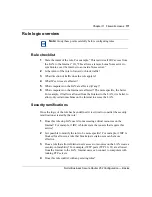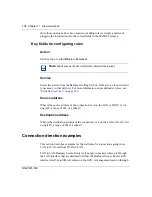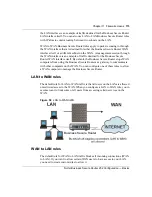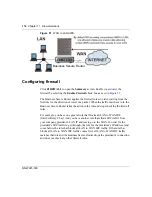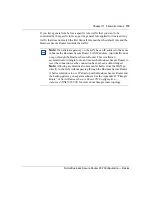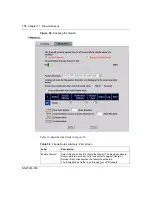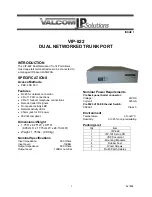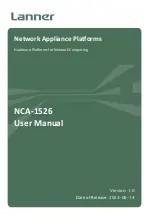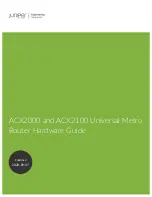
Chapter 10 Firewalls
161
Nortel Business Secure Router 252 Configuration — Basics
All SMTP commands are illegal except for those displayed in
.
•
Traceroute
Traceroute is a utility used to determine the path a packet takes between two
endpoints. Sometimes, when a packet filter firewall is configured incorrectly, an
attacker can traceroute the firewall and gain knowledge of the network topology
inside the firewall.
4
Often, many DoS attacks also employ a technique known as IP Spoofing as
part of their attack. IP Spoofing can be used to break into systems, to hide the
hacker's identity, or to magnify the effect of the DoS attack. IP Spoofing is a
technique used to gain unauthorized access to computers by tricking a router
or firewall into thinking that the communications are coming from within the
trusted network. To engage in IP spoofing, a hacker must modify the packet
headers so that it appears that the packets originate from a trusted host and is
allowed through the router or firewall. The Business Secure Router blocks all
IP Spoofing attempts.
Stateful inspection
With stateful inspection, fields of the packets are compared to packets that are
already known to be trusted. For example, if you access an outside service, the
proxy server remembers things about your original request, like the port number
and source and destination addresses. This remembering is called saving the state
.
When the outside system responds to your request, the firewall compares the
received packets with the saved state to determine if they are allowed in. The
Business Secure Router uses stateful packet inspection to protect the private LAN
from hackers and vandals on the Internet. By default, the Business Secure Router
stateful inspection allows all communications to the Internet that originate from
the LAN, and blocks all traffic to the LAN that originates from the Internet.
In summary, stateful inspection:
Table 35
Legal SMTP commands
AUTH
DATA
EHLO
ETRN
EXPN
HELO
HELP
NOOP
QUIT
RCPT
RSET
SAML
SEND
SOML
TURN
VRFY
Summary of Contents for BSR252
Page 28: ...28 Tables NN47923 500 ...
Page 44: ...44 Chapter 1 Getting to know your Business Secure Router NN47923 500 ...
Page 52: ...52 Chapter 2 Introducing the WebGUI NN47923 500 ...
Page 70: ...70 Chapter 3 Wizard setup NN47923 500 ...
Page 96: ...96 Chapter 5 System screens NN47923 500 ...
Page 114: ...114 Chapter 7 WAN screens NN47923 500 Figure 27 WAN IP ...
Page 120: ...120 Chapter 7 WAN screens NN47923 500 Figure 31 Dial Backup Setup ...
Page 128: ...128 Chapter 7 WAN screens NN47923 500 ...
Page 152: ...152 Chapter 9 Static Route screens NN47923 500 ...
Page 194: ...194 Chapter 11 Firewall screens NN47923 500 ...
Page 210: ...210 Chapter 13 VPN NN47923 500 Figure 67 Summary IP Policies ...
Page 222: ...222 Chapter 13 VPN NN47923 500 Figure 71 VPN Branch Office rule setup ...
Page 256: ...256 Chapter 13 VPN NN47923 500 Figure 81 VPN Client Termination advanced ...
Page 260: ...260 Chapter 13 VPN NN47923 500 ...
Page 264: ...264 Chapter 14 Certificates NN47923 500 Figure 83 My Certificates ...
Page 270: ...270 Chapter 14 Certificates NN47923 500 Figure 85 My Certificate create ...
Page 274: ...274 Chapter 14 Certificates NN47923 500 Figure 86 My Certificate details ...
Page 282: ...282 Chapter 14 Certificates NN47923 500 Figure 89 Trusted CA details ...
Page 298: ...298 Chapter 14 Certificates NN47923 500 ...
Page 316: ...316 Chapter 16 IEEE 802 1x NN47923 500 ...
Page 320: ...320 Chapter 17 Authentication server NN47923 500 Figure 106 Local User database edit ...
Page 328: ...328 Chapter 17 Authentication server NN47923 500 ...
Page 376: ...376 Chapter 20 Logs Screens NN47923 500 Figure 150 Log settings ...
Page 386: ...386 Chapter 20 Logs Screens NN47923 500 ...
Page 393: ...Chapter 21 Call scheduling screens 393 Nortel Business Secure Router 252 Configuration Basics ...
Page 394: ...394 Chapter 21 Call scheduling screens NN47923 500 ...
Page 410: ...410 Chapter 22 Maintenance NN47923 500 ...

